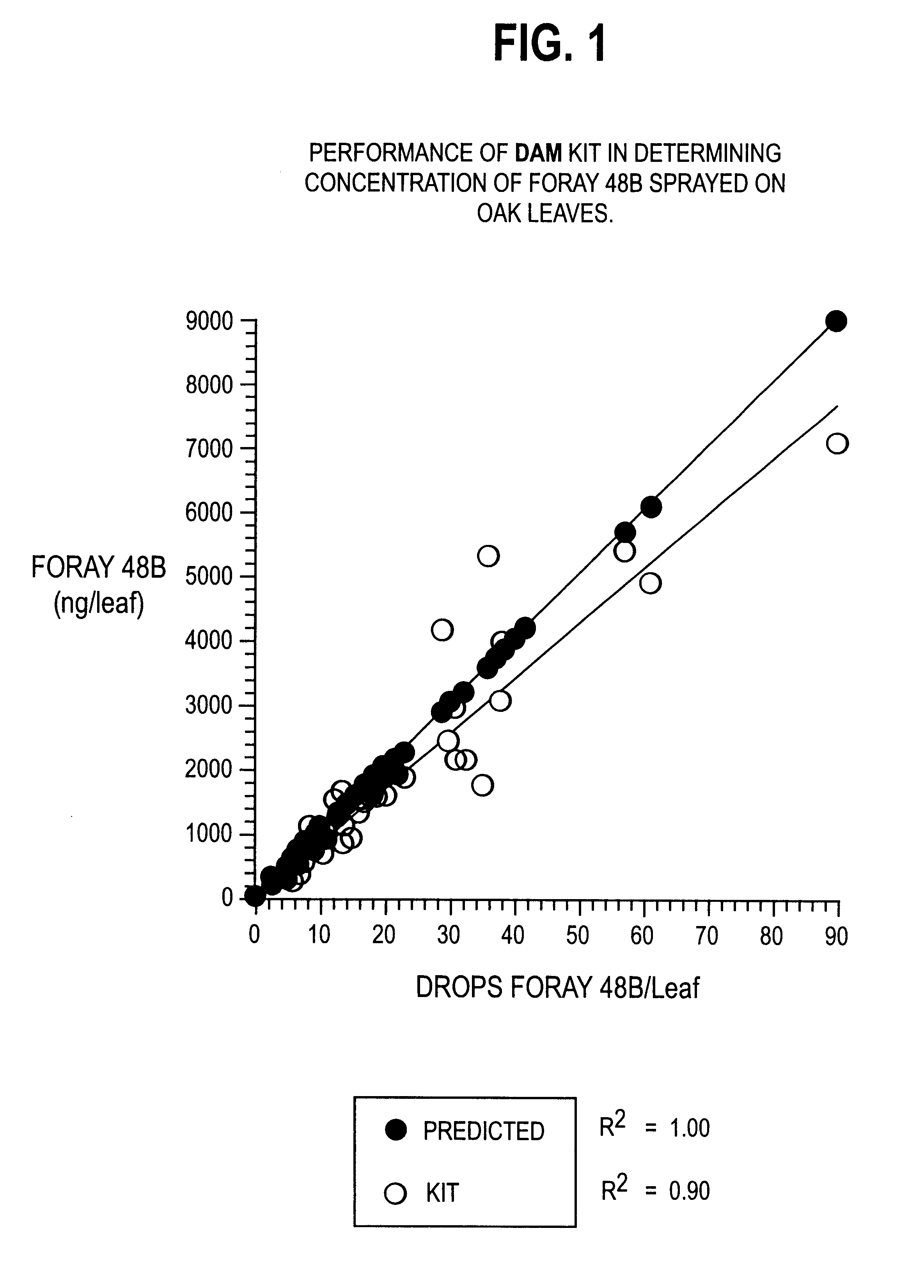Deposit assessment of Bacillus thuringiensis delta-endotoxin
a technology of delta-endotoxin and bacillus thuringiensis, which is applied in the field of immunochemicals, can solve the problems of preventing the use of bioassays, and complicated bioassays, and affecting the quality of samples
- Summary
- Abstract
- Description
- Claims
- Application Information
AI Technical Summary
Problems solved by technology
Method used
Image
Examples
Embodiment Construction
The method of the present invention may be used for detecting the deposit on a sample from a plant or tree of a Bacillus thuringiensis delta-endotoxin or a pesticidally-active fragment thereof including, but not limited to, Bacillus thuringiensis subsp. kurstaki, Bacillus thuringiensis subsp. aizawai, Bacillus thuringiensis subsp. galleriae, Bacillus thuringiensis subsp. entomocidus, Bacillus thuringiensis subsp. tenebrionis, Bacillus thuringiensis subsp.alesti, Bacillus thuringiensis subsp. canadiensis, Bacillus thuringiensis subsp. darmstadiensis, Bacillus thuringiensis subsp. dendrolimus, Bacillus thuringiensis subsp. finitimus, Bacillus thuringiensis subsp. kenyae, Bacillus thuringiensis subsp. morrisoni, Bacillus thuringiensis subsp. subtoxicus, and Bacillus thuringiensis subsp. toumanoffi. More specifically, the Bacillus thuringiensis delta-endotoxin or pesticidally-active fragment thereof may be selected from the group including, but not limited to, CryI, CryII, CryIII, CryIV...
PUM
 Login to View More
Login to View More Abstract
Description
Claims
Application Information
 Login to View More
Login to View More - R&D Engineer
- R&D Manager
- IP Professional
- Industry Leading Data Capabilities
- Powerful AI technology
- Patent DNA Extraction
Browse by: Latest US Patents, China's latest patents, Technical Efficacy Thesaurus, Application Domain, Technology Topic, Popular Technical Reports.
© 2024 PatSnap. All rights reserved.Legal|Privacy policy|Modern Slavery Act Transparency Statement|Sitemap|About US| Contact US: help@patsnap.com








